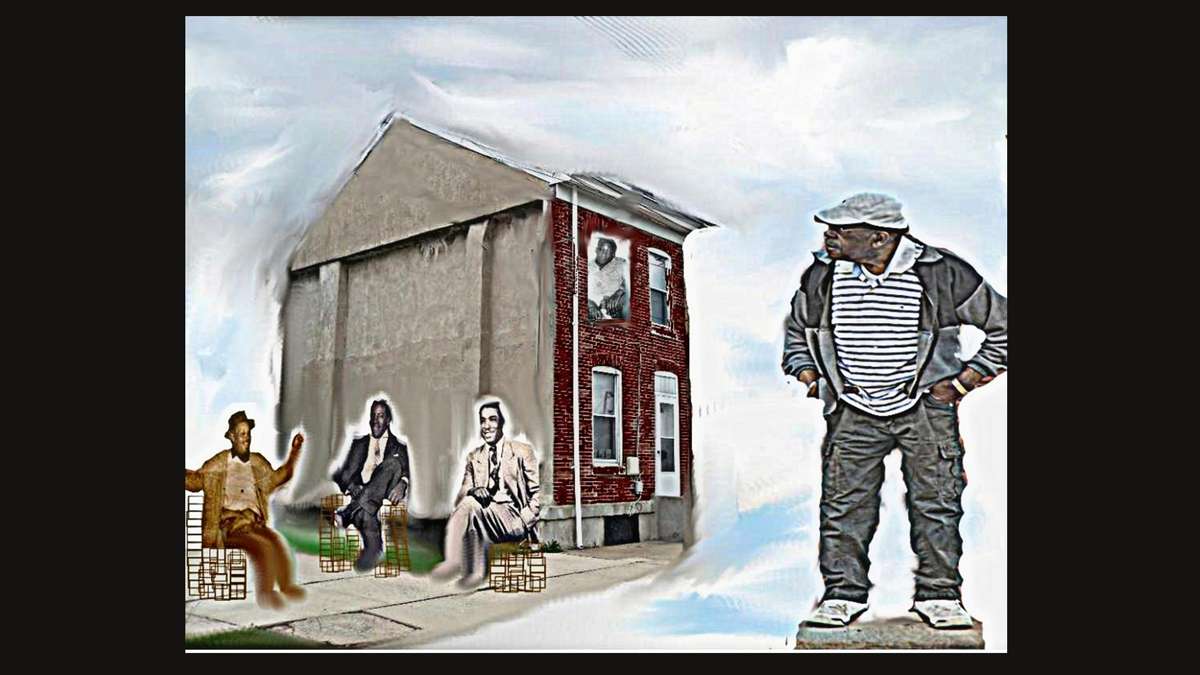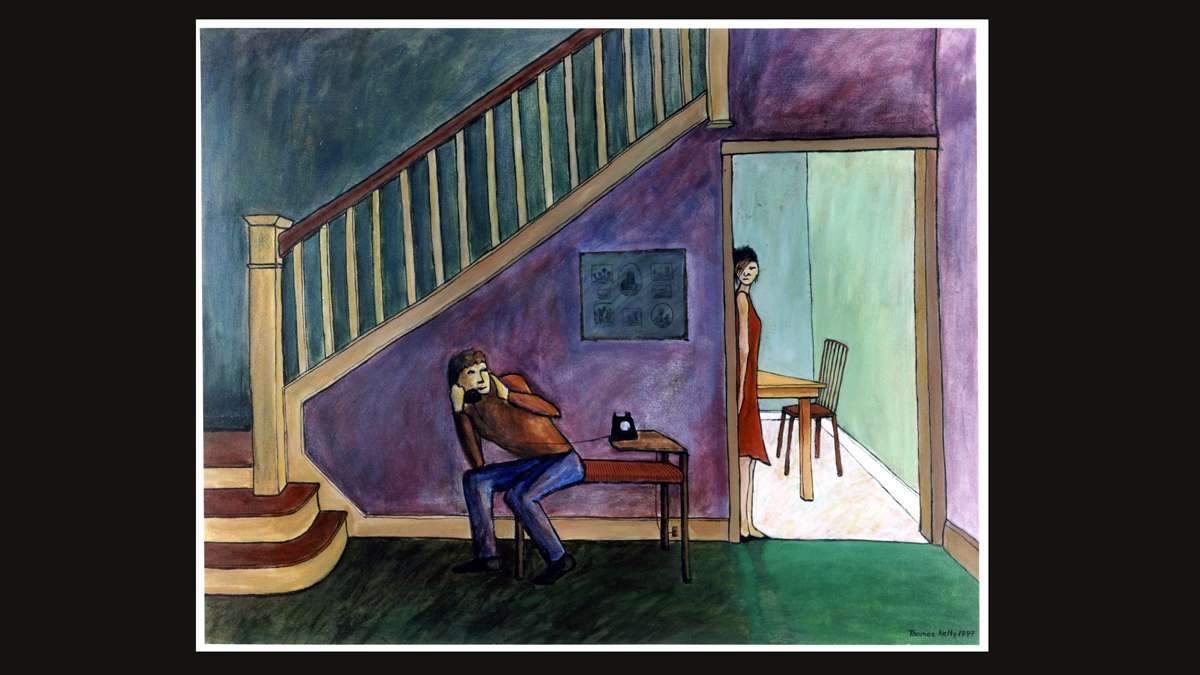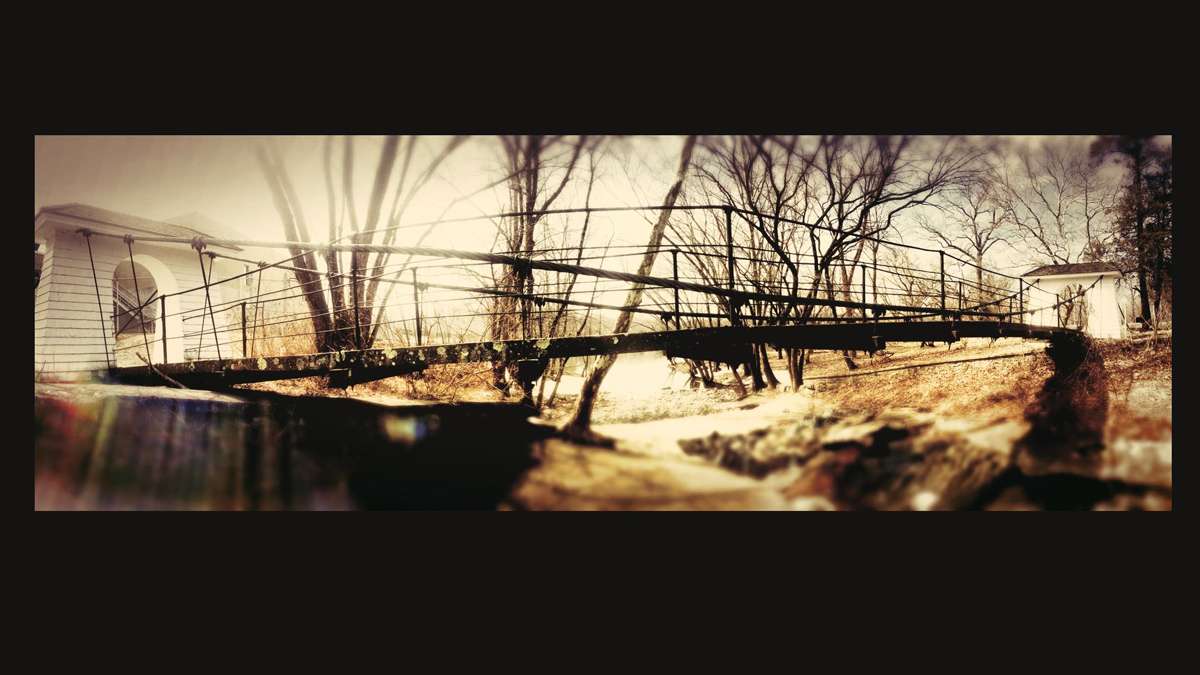New exhibit looks at the Trenton’s history through the eyes of artists
It’s a new day in Trenton. As of July 1, the capital city has had a new mayor. Eric Jackson follows Mayor Tony Mack who, in February, was convicted on charges of bribery, fraud, extortion and money laundering. Jackson has his work cut out for him, but the thriving arts in Trenton can only help.
On a recent summer afternoon, a line of cars was parked in Cadwalader Park, just outside Ellarslie. The garden was well tended, exuding the subtle scent of insecticidal soap. A twisted wooden pergola led the way to the front entrance, and several patches on the Italianate villa that houses the Trenton City Museum showed signs of recent repairs.
A new director, Donna Carcaci Rhodes, came on board part time in June and is seeking to expand funding, grants and sponsorships for the 36-year-old museum. And an exhibit, Trenton Then & Now: Contemporary Views — part of the celebration of New Jersey’s 350th anniversary and a magnificent anthem to the city – is a draw.
The exhibit is separated into rooms of then and now, the “then” paintings, from the museum’s collection, in the Thomas Malloy Gallery. Named Trenton’s Artist Laureate in 2001, Malloy — who died in 2008 at the age of 95 — was a chronicler of the capital city, as well as a founder of the Trenton Artists Workshop Association and Trenton City Museum.
Taking center stage in the eponymous gallery is Malloy’s 1981 painting, “A Historic Place” – the name deriving from a sign on a red brick facade, exposed through a vacant adjacent lot. Cars are lined up on busy Broad Street, a nicely dressed family is about the cross the street, and in the distance we see the State House dome, water towers, church spires, the Battle Monument, and other Trenton landmarks. It is a reminder of how beautiful a city Trenton is.
Malloy also painted Ellarslie Mansion in 1981, three years after it opened as a museum. So many artists have painted this exquisite building, the works could easily comprise an entire exhibit. Another is Robert Sakson’s 1984 rendering, under the cover of snow – you just want to get out your Flexible Flyer and sled down the hill.
Alongside historic views of Trenton’s red brick factories, warehouses, smoke stacks, bridges and locks are ink drawings and etchings of the capital city’s Italianate, Beaux Arts and Greek Revival architecture. A color photograph of the Battle Monument by Times of Trenton photographer/editor Michael Mancuso helps to understand how these historic structures fit together in the skyline.
Kate Graves paints flowing watercolors of the city’s crumbling derelict buildings, such as the Roebling Complex, with its air handlers – like little smokestacks – at top. It is at the Roebling Complex where the Brooklyn Bridge was conceived. “I believe in the power of… transforming the detritus of past culture into something new and sustaining for the future,” says Graves.
Trenton is a city of contrasts, from iron pours at Art All Night – evoking the city’s industrial past – to scenes of the Delaware River and the bridges that span it, re-enactments of Washington crossing the Delaware to the iconic “Trenton Makes The World Takes” bridge, lit up at night. Writes photographer Brendan Connors: “It is an anachronism. Everything has already been taken and not much is being manufactured. Trenton’s been bled dry.”
Artist’s views of the Trenton Makes Bridge could also constitute a full exhibit. Here we see the bridge during last winter’s “Great Thaw” by photographer Paul Wesley. Officially named the Lower Trenton Bridge, it’s again depicted in a large watercolor by Marina V. Ahun, showing the steel trusses over brick supports with its huge neon red letters under a twinkling night sky.
Former Trenton Police Officer William Osterman also looks at the city at night, again examining the river during last winter’s thaw, with the War Memorial, State House and other buildings lining the distant sky.
Among Trenton’s messy history is a famous case of racial discrimination. “The Trenton Six” were falsely accused of the murder of a 73-year-old junkyard owner – two were found guilty by an all-white jury. Albert Einstein, Thurgood Marshall, W.E.B. Dubois and the NAACP came to their aid. Artist Holly Williams depicts how her father, 16 at the time, narrowly escaped being one of the accused because of his change of plan for that night. At 83, he is able to tell about this injustice, recounts his daughter.
Nature finds its way into the hardest most impervious surfaces in an industrial city. In Craig Shofed’s “Corner,” multicolored ivy takes over a brick building on a sunny autumn day. Shofed describes it as a war, nature battling industry. “It is in nature’s reclamation that I find my art,” he writes.
Joe Kazimierczyk finds the great outdoors surrounding the city, with railroad bridges crossing the D&R Canal, and reflections of trees. But much of Trenton’s life takes place indoors, and Thomas Kelly shows us the lighter side of domestic life. He looks at “girls with big hair on small porches,” nosy neighbors, the oasis-like backyards of row houses. “These streets are where giants walked, built, danced, ate, loved and fought,” he says. “We do need to look back to go forward. Will we measure up to our historical giants? If we roll up our sleeves like Trenton past, I believe we can.”
Trenton Then & Now: Contemporary Views is on view at Ellarslie, the Trenton City Museum, through Sept. 14.
________________________________________
The Artful Blogger is written by Ilene Dube and offers a look inside the art world of the greater Princeton area. Ilene Dube is an award-winning arts writer and editor, as well as an artist, curator and activist for the arts.
WHYY is your source for fact-based, in-depth journalism and information. As a nonprofit organization, we rely on financial support from readers like you. Please give today.










